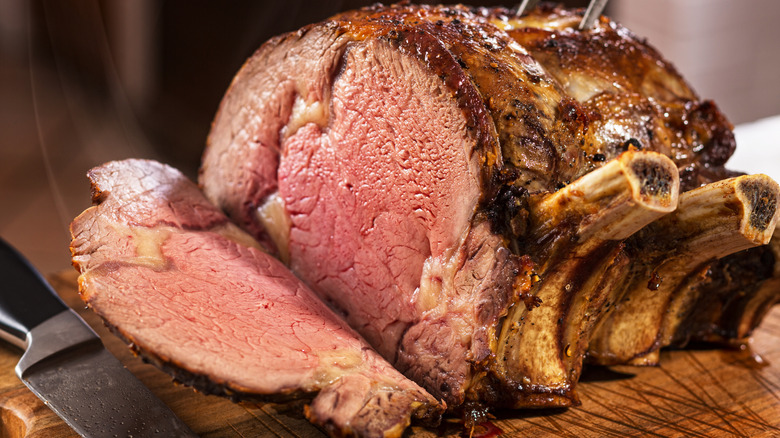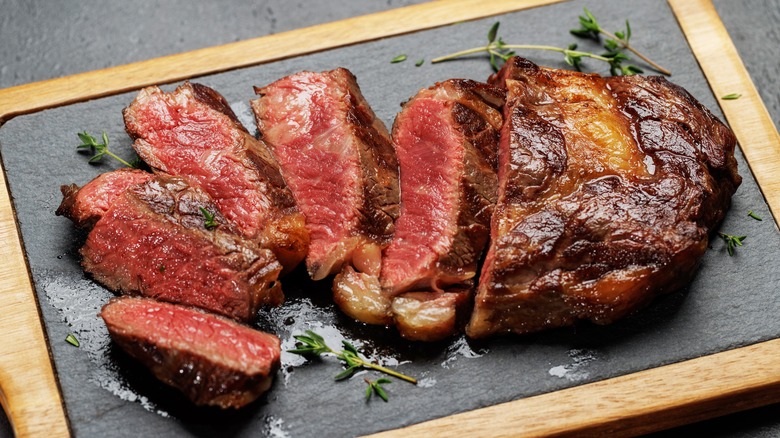The Cooking Methods That Make Prime Rib And Ribeye Different
Make no mistake about your favorite beef dishes — with such a wide variety of different cuts and preparations to choose from, there's an understandable confusion between two rib-named favorites: prime rib roast and ribeye steak. Both are delicious but, technically speaking, the two cuts of meat also come from the same place on the cow. The biggest difference is the cooking method with which each is prepared, accounting for both subtle and observable variances in taste and texture. A prime rib roast, as its name suggests, is usually slow roasted in an oven. In contrast, a ribeye steak is cooked via quickly charring on a stovetop.
In butcher terms, the prime rib and ribeye cut are each derived from the same primal rib part of a cow. Prime rib is a larger piece of that section, while a ribeye is that same section sliced into individual pieces. With a prime rib, the bone is typically left in for roasting. With a ribeye, the bone is cut during slicing and sometimes removed entirely. Prime rib has a rich fat cap, which adds more flavor during the roasting process. Ribeye has its own similarly tender and flavorful rib cap called the spinalis dorsi. While both share a great deal of similarities, the differences in cooking methods — and the tasty end results — are what definitively distinguish the two.
The differences between preparing prime rib and ribeye
A prime rib roast is often the centerpiece of a holiday or special occasion table. Although it can be found year round, this cut of meat is especially favored for its crowd-pleasing presentation, often carved tableside for salivating guests. There are different ways to slow-roast your prime rib, such as the popular reverse sear method. Oven roasting a prime rib creates a tender, melt-in-your-mouth texture. This can be complemented with either a raw or creamy horseradish sauce, the spiciness of which makes an excellent counter to the richness of the meat.
Cooking a ribeye steak is typically done by placing it on a hot grill and charring it to your preferred method of doneness. This takes considerably less time than the delicate process of slow-roasting prime rib and yields a vastly different meatier texture and flavor. Ribeye also has several other bone-in variations, including the cowboy and tomahawk steaks. While a prime rib requires more care in preparation, the fat content of a ribeye steak means that overcooking it rarely ruins it. Whichever dish you decide on, understanding the differences between prime rib and ribeye will make either one the highlight of your table.

